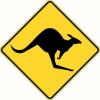Hi all...I received a RH skew block from LV for Xmas. Haven’t had a chance to use it just yet, but hoping to get some feedback. I posted in another forum, but the topic has seen little response...hoping for some LV users and/or @roblee to pop in...
When I tighten the fence rod into the plane body, there is a very, very small amount of play in (what I can assume) the threads...this causes the fence to skew relative to the sole a very small amount. Also, the fence doesn’t lock “tight” onto the rod and if the sole wasn’t blocking the fence, I could rotate the fence 360 degrees. Now, when planing, the fence would be square to the sole, so I’m not too worried about the rotation of the fence, but wanted to confirm if this was correct. I’m more worried about the “loose” fitting of the fence rod into the body.
I’ve only ever used a LN skew block and that fence locked tighter than a drum, so that’s what I was expecting. I just like the LV better.
Thanks,
Kevin




 Reply With Quote
Reply With Quote








